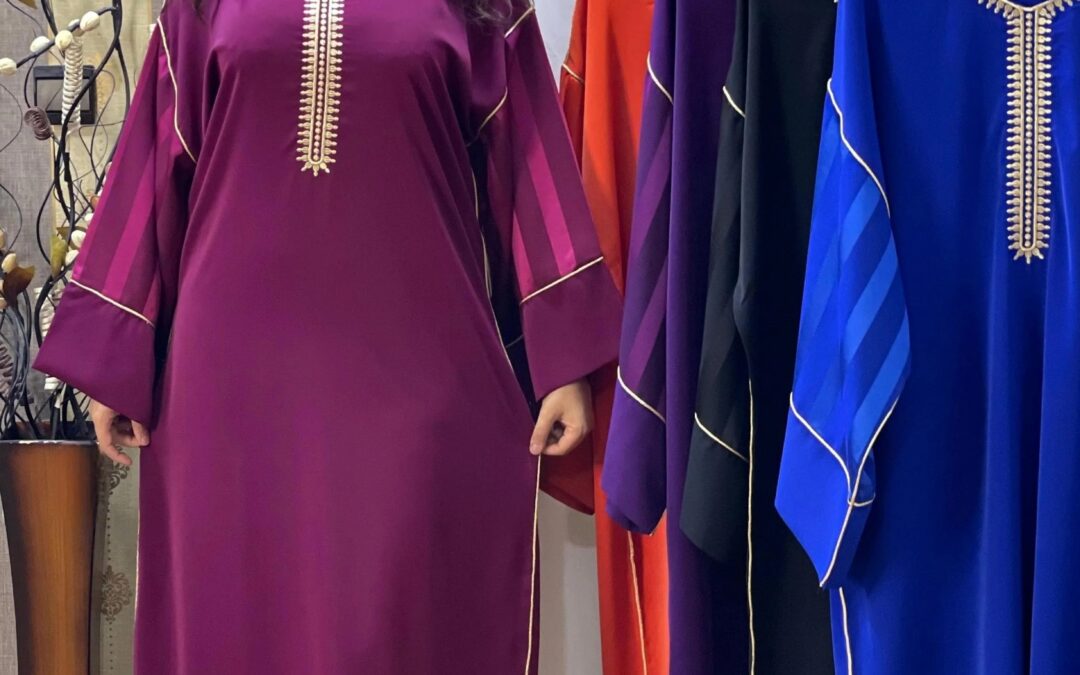The Moroccan Caftan: Centuries of Tradition and Distinction
The Moroccan caftan is more than just a piece of clothing; it is a symbol of heritage, elegance, and craftsmanship. Rooted in centuries of tradition, the caftan has evolved from its historical origins to become a celebrated garment in modern fashion. This iconic dress is known for its luxurious fabrics, intricate embroidery, and timeless appeal, making it a staple of Moroccan culture and a source of pride for generations of women.
The Origins of the Moroccan Caftan
The history of the Moroccan caftan dates back to the time of the Moors and the Andalusian era. It was introduced to Morocco by the Merinid dynasty in the 13th century, influenced by the rich textiles and fashion of Al-Andalus. Over time, Moroccan artisans adapted and refined the caftan, blending local craftsmanship with influences from Ottoman, Persian, and Berber cultures. What was once a garment reserved for royalty and the elite gradually became an essential part of Moroccan fashion.
Craftsmanship and Design
Moroccan caftans are renowned for their exquisite craftsmanship. Made from luxurious fabrics such as silk, velvet, satin, and brocade, they are often adorned with delicate embroidery, sequins, and hand-sewn pearls. The art of making a caftan involves techniques such as Tarz (embroidery), Sfifa (decorative trimming), and Aqaad (handmade buttons), all of which require the expertise of skilled artisans.
The caftan is unique because of its ability to be both traditional and modern. While classic designs emphasize regal elegance, contemporary designers have introduced new elements, such as bold cuts, modern tailoring, and fusion styles that incorporate Western influences.
The Caftan in Moroccan Culture
The caftan holds a special place in Moroccan society, particularly for weddings, religious celebrations, and special occasions. Brides often wear elaborate caftans, sometimes layered over other traditional garments, such as the Takchita, which consists of two layers: a simple dress underneath and a more ornate, embroidered outer layer. These garments symbolize femininity, grace, and social status.
Over time, the caftan has become a national emblem of Moroccan identity. It is worn with pride during cultural events, official ceremonies, and international fashion showcases, representing the beauty of Moroccan heritage.
The Moroccan Caftan on the Global Stage
The Moroccan caftan has transcended borders, gaining recognition in the global fashion industry. International designers and celebrities have embraced its elegance, showcasing Moroccan-inspired creations on red carpets and runways worldwide. Events such as Caftan du Maroc, an annual fashion show dedicated to the evolution of the caftan, have helped solidify its status as a high-fashion garment.
Moreover, modern adaptations of the caftan have been featured in major fashion houses, with designers incorporating Moroccan motifs into haute couture collections. Its intricate detailing and luxurious appeal continue to inspire fashion enthusiasts across the world.
Conclusion
The Moroccan caftan is a timeless masterpiece that embodies centuries of history, artistry, and cultural significance. Its evolution from a royal garment to a globally admired fashion statement showcases its adaptability and enduring charm. As Moroccan designers continue to innovate and blend tradition with modernity, the caftan remains a symbol of distinction, elegance, and national pride.
Whether worn at a wedding, a cultural celebration, or an international runway, the Moroccan caftan continues to captivate and inspire, ensuring its legacy for generations to come.

